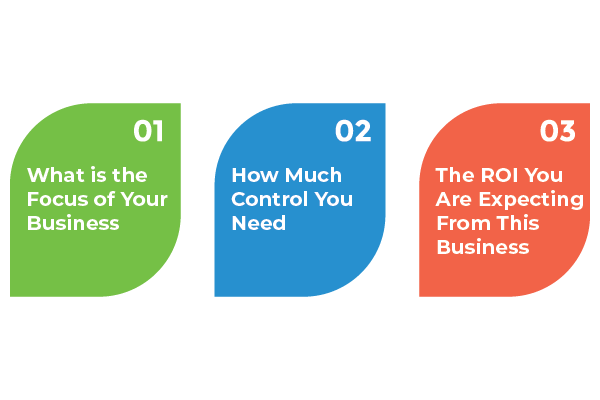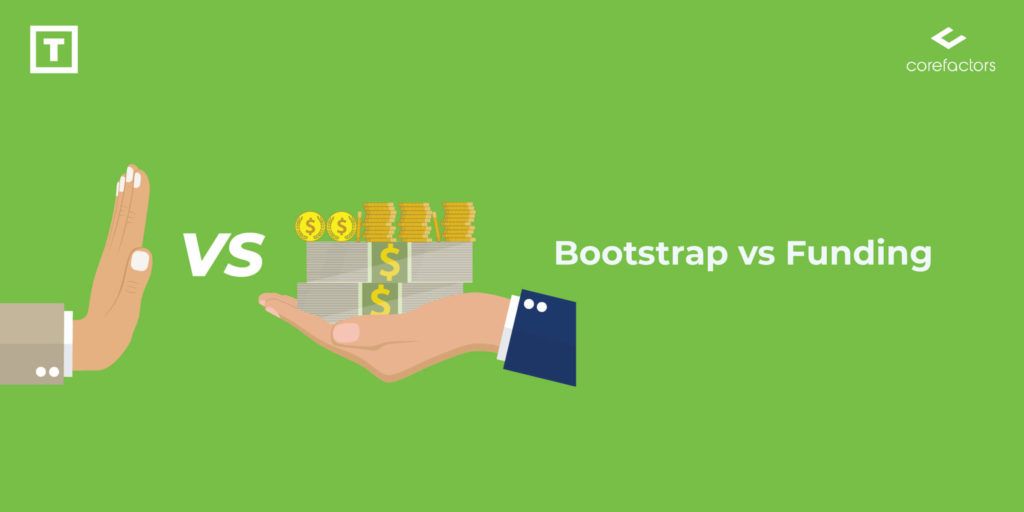As an entrepreneur you would have come across this age-old debate, should you bootstrap your company or try to raise funding?
Many people have strong ideas about how to fund and run a business, particularly a SaaS business. But the answers to this question are as individual as the companies themselves.
In this article, let’s walk you through the various factors to consider when deciding between bootstrapping vs funding.
Many factors are important in deciding whether fundraising or bootstrapping is the right choice for you:
- The uniqueness of your product
- Maturity of your market
- The pace of your growth
- Length of the opportunity window
- Types of growth challenges and limitations
Difference Between Bootstrapping vs Funding

If you start a company without seeking external funding, it’s bootstrapping. Building up a company with whatever with your own money and resources refers to bootstrapping your company.
Most of the startups that are bootstrapped try to adopt a lean business model and innovate ways to be as effective as possible. Your decision-making is solid with bootstrapping you.
It gives more freedom. There’s little to no interference from the investors in your decision-making process. The goal is clear and simple.
Raising funding, on the other hand, is when you seek out investors, typically known as Venture Capitalists, and get them to invest money in your company. These investors provide you with the capital in exchange for equity.
If you are seeking financial freedom though, venture funding gives you enough to pursue your business interests.
Other people are also involved, those who can bring different ideas, expertise, and varied backgrounds. It gives you everything you need to flesh out the business and to give it a great head start.
Questions To Ask Yourself Before Picking a Strategy

It’s crucial to know what you are going to choose according to your business. Here are some of the questions you need to ask yourself before picking a strategy.
What Is The Focus of Your Business
If your ultimate priority is steady growth, then you better fix an investor’s support.
With funders, it will be much easier to achieve. In this case, you want to clarify if the speed is important for you and in general throughout the market and if you’re able to keep up with it.
For example, if your startup is tech-oriented, here the tempo is quite high and it’s an inevitable part of the market.
Technologies don’t stop for anyone. You have to be quick and embrace new trends as they come to be successful in your business.
If you’re trying to take your product to a new quality level instead of spending time in meetings with investors, you should certainly try to bootstrap your business.
Besides, more money can solve a lot of problems and bring real decisions, but not always. For instance, if you’re limited on budget, you’re forced to make creative decisions and it will ultimately play into your hands.
How Much Control You Need
You’ve got a lot more flexibility when it comes to the freedom and control of the owners. Assuming that you bootstrap your company.
All the decisions you want to make regarding your business, including pushing back or bringing forward a project, goal, or milestone, you’re free to do. No one will question you about it.
When you have started your business through funding though, timelines are needed to be more structured and rigid. You have got less room for last-minute changes.
Staying informed about market trends and financial insights, perhaps through reputable investment newsletters, can help you navigate these structured timelines more effectively.
It’s hard to think, but when you start your business with funding, it essentially means that your company isn’t 100% yours anymore.
You’ll have to consult with your VCs and get their insights before you explore a different business model, or do anything that isn’t part of the original plan.
If you’ve bootstrapped your company, you’re free to decide on your own and make all the changes you wish.
The ROI You Are Expecting From This Business
It’s important to think about what kind of growth you want to achieve. When you bootstrap your company, you’re working with limited resources, which means that you’ll have to make do with a slower growth rate.
If you’re funded by a VC, on the other hand, you can grow and gain traction much more quickly. Needless to say, both can achieve a good score.
Some business owners argue that when you’re funded by VCs, you might have less financial discipline. This means you wouldn’t make the most of your money, like how you’d do if you’re bootstrapped.
Funded Ventures Pros and Cons

External funding provides businesses with a lot of financial resources which leads to faster growth of the company.
Experienced investors also play a crucial part for the young entrepreneurs as they help them and are there to guide them through tricky situations.
Moreover, their network of industry’s contacts helps the startup in earning much-needed credibility at the start.
Funded ventures are fully focused on developing their business, and should act as an effective starting point for introducing their product in a leading market.
However, like all the operational models out there, funded ventures also come with their own set of cons, the main loss being that the business owner loses a quite considerable amount of claim over the company.
Moreover, the variety of restrictions on payments, equity, and decision-making drastically limits the creative mind of the founders.
So, instead of owning the business itself, the founders end up owning just a smaller portion of a much bigger pie.
Bootstrapped Ventures Pros and Cons

Bootstrapping is quite a stable way of gathering revenue and supporting the near future investments. Moreover, It also provides entrepreneurs with a safety net for managing long-term costs.
As the business owner does not need to rely on other funding sources, the entrepreneur does not need to worry about spreading business ownership among the investors.
As entrepreneurs now don’t need to issue equity, they can mainly focus on building and developing their products.
It allows entrepreneurs to experiment with what they can do with their company as they don’t have the pressure from investors to release their product.
So, when it comes to taking on investors, they can focus on partnering with someone who brings in a required skillset and industry-specific expertise as well.
When bootstrapping is compared with venture capital, it can prove more beneficial as it enables the entrepreneur to gain control over critical business decisions.
However, the downside for this is that in this form of financing, might also result in an entrepreneur being under unnecessary financial risk.
In addition to this, bootstrapping may not provide the company with enough investment for it to become successful at a faster pace.
Conclusion
What you choose at the end depends on the endless influences beginning from the moment you enter a large market, your expected growth rate with time, available funds & resources at the present, cash flow crunches, other risk factors, and lots more.
There is no particular way to alter your decision to be bootstrapped or get funded.
But it’s important to consider that even if you don’t raise funding now, it doesn’t mean you have to be bootstrapped forever. It’s possible to raise funds later on in your business journey.







